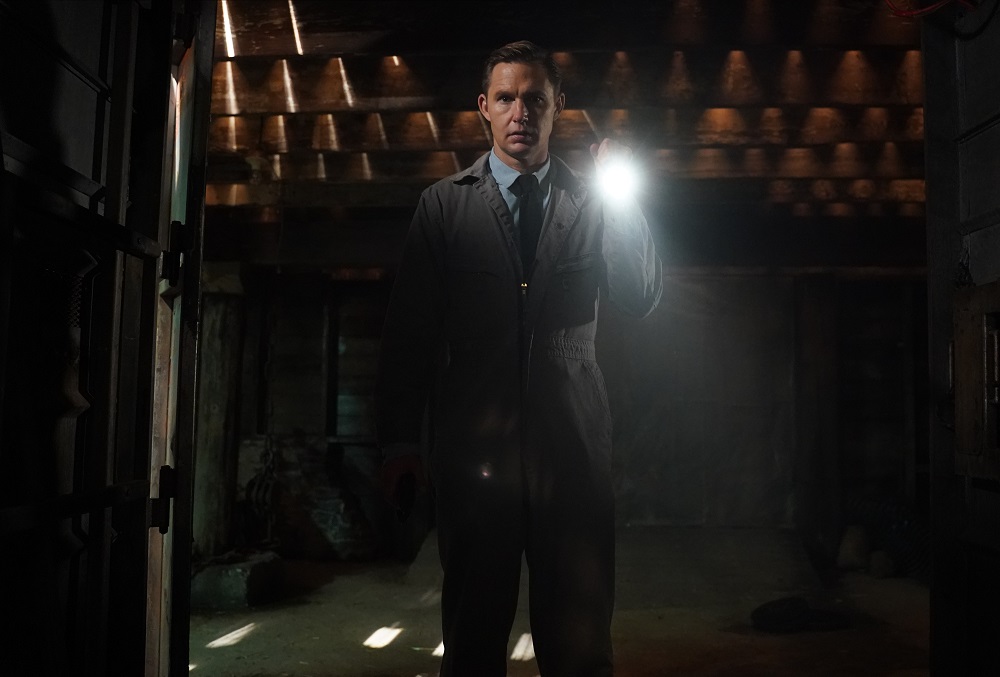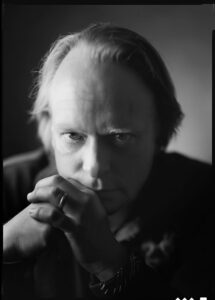
In the ABC series Big Sky, the operative word was certainly “big” when it came to cinematographer Oliver Bokelberg, ASC designing the vast vision for the show. The story of the search for a serial killer is set among the expanding backdrop of Helena, Montana with Albuquerque, New Mexico and its orange mountains as the original doppelganger location. However, due to the pandemic, locations were moved to Vancouver where Bokelberg had to slightly shift his color scheme to more blues and greens.
This was a mere glitch to Bokelberg who delights in finding solutions to perceived problems. After all, he also doubles as a director where resolving issues is a daily occurrence. You might remember that little show Scandal which was his home for seven years where he wore both hats. In fact, in David E. Kelley‘s Big Sky, he directed one episode in season 2. Aside from that, he has been at the helm developing the series from day one.
Bokelberg spoke with Below The Line via Zoom from his home in Germany where he is originally from and has been living in between seasons. He discusses shooting wide to uncover what evil lurks beneath in the immense black darkness, and the tricks behind some of the shots that make up the look and feel of this gritty, dark drama.
Below The Line: Let’s talk about the vastness of this show and the challenges of shooting such a big scope.
Oliver Bokelberg: The interesting this is you’re doing it on network television. It seems to be easier on a film or a streamer to deliver the big wide shots. In network, we so easily fall for “let’s cut from close-up to close-up.” This show didn’t want to be that. I mean the show is Big Sky and it is big sky [laughs]. When you start working on a pilot developing something you have those conversations with the director Paul McGuigan, who I love and we’ve done stuff before.

BTL: What were some of those conversations with the director?
Bokelberg: This is big sky. This is in the middle of nowhere Montana. Everything seems sunny side up and then you start looking into the little corner somewhere and it gets scarier. We felt that we needed to be that. We needed to be wide, we needed to use wider lenses than we use sometimes on shows. For me technically it was always, “Let’s go wider, and then maybe a little closer,” which we tried to maintain during the show. We felt it was really important to deliver the vastness. You don’t know where it’s lurking. You don’t know where it’s pretty and where it’s dirty.
BTL: You had that glitch due to the pandemic where you had to change locations. Can you talk about that?
Bokelberg: We had some beautiful landscapes shot in Montana, really gorgeous which always opened the show up already. But then we tried in our set pieces to also be able to go wide. Originally we were doing the pilot in Albuquerque and we had just shot a scene that day at noon and we got the call that we were being canceled to continue. Then we all went home not knowing what Covid would bring our way and a few months later we all ended up in Vancouver which made it a better match to Montana.
BTL: What changes did you have to make in your color scheme?
Bokelberg: You fall in love in prep with what you develop and you have this visual language that’s coming together and then at first you don’t find anything close to what you love. You have to start reinventing it. Vancouver is a little more colder, a little more blue, a little more green. I like where we are now. I think the color schemes and certain approaches is something that the Internet is great for now. We have such easy access with Shot Deck or Film Grab to start pulling ideas from and that’s very guttural. Some of the show is dictated by the location. In Vancouver, the light is different; there’s no warm, no orange mountains and the earth is different so our color scheme shifted from one place to the next. I don’t love blue nights; I think there’s a little bit of green in the moonlight which causes that cyan tone to that. You whittle down on your pictures and you start a dialogue with the director and the Production Designer, Ross Dempster, who did an outstanding job, and find it. When you lock into certain schemes you run with it. It’s an amazing advancement in technology with LED lights where we can actually dial colors. We don’t have to send somebody up in a lift to change the color gel. We can do it from the ground.
![[L-R] Kylie Bunbury and Ryan Phillipe in Big Sky](https://www.btlnews.com/wp-content/uploads/2021/06/BIGSKY3-ABCDarko-Sikman.jpg)
Bokelberg: It’s one of the trickiest things to read in the script where it says, “It’s pitch black.” I can’t get by with that. One of my favorite films from 1961 is Jean-Luc Godard’s A Woman Is A Woman and he actually cuts to the black leader which I think is gutsy. We can’t really do that. We have to invent our darkness. You can use contrast but you don’t want to get scared with it. In the container where the girls are kept hostage, we added a light bulb but there wasn’t supposed to be a light bulb! You make those choices in pre-production when you approach the subject matter. It says it’s “all black” but I think that was the right choice. As a cinematographer, you find yourself always thinking, “Am I putting too much light in here. Is it too much now?!” It does say “pitch black” and it’s written that way for a reason, to be scary. At some point, we turned that light off sometimes and the same thing outside. In the pilot when the girls get pulled over when their car breaks down, that turns into a horror genre. For me that means we can put in a little smoke, a little fog backlit and it becomes scary. I guess you have to cheat darkness for the screen.
BTL: What about the shots when they are on the road? The character Ronald drives this gigantic truck. Did any cars break down?
Bokelberg: Actually, we broke the Tesla when we got it stuck in the ground! It’s not something we should’ve done to the Tesla probably. We should’ve kept running the engine over the brakes. Otherwise, the cars held up. The tricky part is that we didn’t want it to be fake, so it’s always a fine line because you have to get the actor’s performances [in the cars]. So, it consists of many set-ups; one being stunt drivers up in the hillside, one being the real people but then Ronald [Brian Geraghty] can’t really be driving a truck, so you have to pull the truck up the hill when he’s sitting behind the steering wheel which is a feat in itself. Then we have it in front of an LED screen for other stuff so it’s a combination of LED screen driving and real driving. We would probably prefer to do it all for real but there’s something about the sloppiness of that which makes it more attractive somehow. It makes it more real.
BTL: The women detectives in this show are not glamorized at all with filters which is so refreshing.
Bokelberg: I personally had gotten tired of filters. I did seven years of Scandal, and we filtered every shot and everything was with a zoom. I think for the longest time it was somewhat trying to emulate the look of film. It’s still probably my preferred aesthetic in shadow depth of field and things but I think we have to move with the time and a newer audience. Growing up with video games we have to move with that. It’s not to say if somebody has a bad day we don’t use filters to help but there is something to the honesty of not having them that I like in this show. It needed a little rawness and a pop to it.
![[L-R] John Carroll Lynch and Brian Geraghty Behind-The-Scenes of Big Sky](https://www.btlnews.com/wp-content/uploads/2021/06/BIGSKY-BTS_ABCDarko-Sikman.jpg)
Bokelberg: You have to learn patience! I think it’s somewhat of a natural progression because we are storytellers. As a cinematographer, I have a bullsh*t meter. If something looks or feels fake I’ll turn off the lights! I do the same thing working with the actors to make it authentic. There’s much more homework for me as a director to know the scenes more thoroughly and how it flows.
BTL: Do you shoot Big Sky to make it look more like a film than a television show?
Bokelberg: I think I’ve gotten used to my favorite shots ending up on the cutting room floor. It’s really not about pretty little images. It’s about storytelling. In television, things easily get crushed because of the time constraints in 43 minutes. I think we try to be as cinematic as possible with this. I think maybe it’s the upside of Covid television that we can do it all in less time. The process is slower because we can’t do too many people in a room so something has to give. Covid television doesn’t allow for options so we have to start thinking more like a feature and do more precise work which might be benefiting us in many ways.
BTL: Looking back on the last two seasons, what have been the highlights for you?
Bokelberg: You don’t get better than Brian Geraghty and John Caroll Lynch‘s character and the entire ensemble. It’s truly been a great experience working with the actors Brooke Smith and Kylie [Bunberry] and Katheryn [Winnick]; I mean every single one of them is where it’s at. But I love the scenes where Ronald goes berserk. Those are my favorite. To know you’re going to get to set and it’s going to be great makes it so much easier for me as a cinematographer. I went through two quarantines in Vancouver where twice I was stuck for two weeks so that was a little bit of a drag where we couldn’t go home to our families. We truly love what we made so then it’s all worth it.
All images courtesy of ABC, except where noted.





